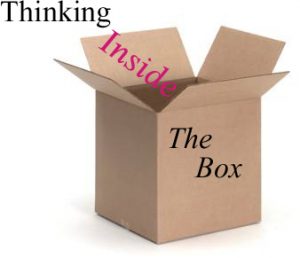
GUEST POST from Mike Shipulski
When you have nothing to say, don’t say it.
But, when you have something to say, you must say it.
When you think your response might be taken the wrong way, it will.
When you take care to respond effectively, your response might be taken the wrong way.
When you have disagreement, there’s objective evidence that at least two people are thinking for themselves.
When you have disagreement, confrontation is optional.
When you have disagreement, everyone can be right, even if just a little.
When you have disagreement, that says nothing about the people doing the disagreeing.
When you have disagreement at high decibels, that’s an argument.
When you have disagreement, disagreeing on all points is a choice.
When you have disagreement, if you listen to sharpen your response, it’s a death spiral.
When you have disagreement, it’s best to disagree wholeheartedly and respectfully.
When you have disagreement, if you listen to understand, there’s hope.
When you have disagreement, it’s a disagreement about ideas and not moral character.
When you have disagreement, intentions matter.
When you have disagreement, decision quality skyrockets.
When you have disagreement, thank your partner in crime for sharing their truth.
When you have disagreement, there is sufficient trust to support the disagreement.
When you have disagreement, sometimes you don’t, but you don’t know it.
When you have disagreement, converging on a single point of view is not the objective.
When you have disagreement about ethics, you may be working at the wrong company.
When you have disagreement, there are no sides, only people doing their best.
When you have disagreement, the objective is understanding.
When you have disagreement, it’s the right thing to have.
When you have disagreement, there may be disagreement on the topic of the disagreement.
When you have disagreement, you are a contributing member, even if you stay quiet.
When you have disagreement, why not be agreeable?
When you have disagreement, it’s okay to change your mind.
When you have disagreement, you may learn something about yourself.
Image credit: Unsplash
![]() Sign up here to join 17,000+ leaders getting Human-Centered Change & Innovation Weekly delivered to their inbox every week.
Sign up here to join 17,000+ leaders getting Human-Centered Change & Innovation Weekly delivered to their inbox every week.

 It seems like every organization has a vision and a mission statement, and some even have mantra’s. My personal innovation mantra is to make innovation and marketing insights accessible for the greater good.
It seems like every organization has a vision and a mission statement, and some even have mantra’s. My personal innovation mantra is to make innovation and marketing insights accessible for the greater good. Best practices indicate that innovation succeeds best when it is constrained. But for some people, it doesn’t make sense that innovation needs to be constrained. – “Don’t great ideas come from giving people free reign?”
Best practices indicate that innovation succeeds best when it is constrained. But for some people, it doesn’t make sense that innovation needs to be constrained. – “Don’t great ideas come from giving people free reign?”